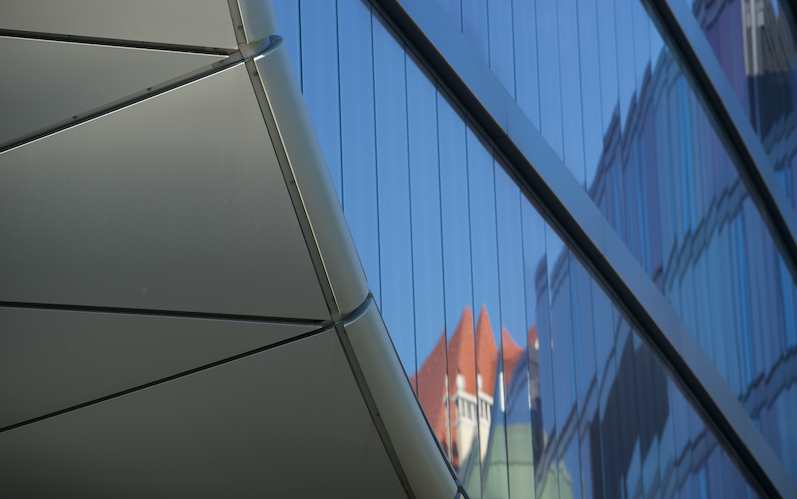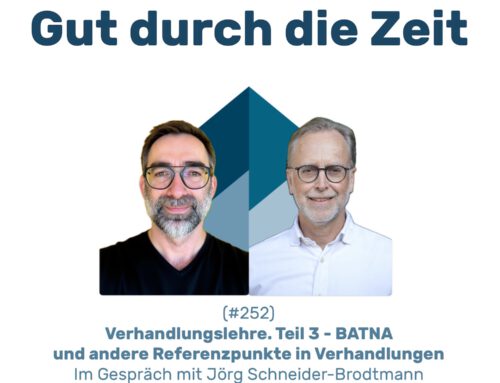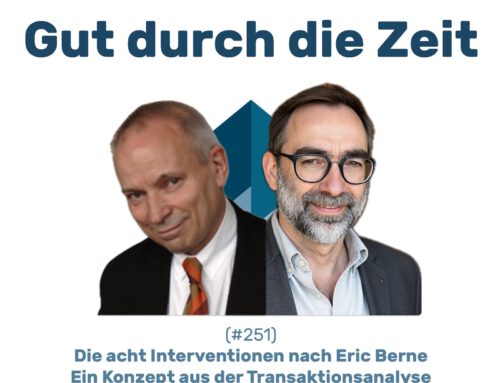Designing mediation.
The almost forgotten mediation style according to Edward de Bono.
The Cognitive scientist Edward de Bono did not explicitly deal with modern mediation in the 1980s, but rather with blocking and enabling schools of thought in general, which, however, are particularly evident in conflict management and have an obstructive effect. This article briefly summarises these schools of thought and then presents the elements and possible methods of a designing mediation before. This – conception, which is based on de Bono, supports the procedure of Mediation in and for organisations strategically and therefore future-oriented to the organisation. On the one hand, this means orienting the process itself towards the future and, on the other, aligning conflict management with the organisation's strategy.
Schools of thought in conflict
The Cognitive scientist Edward de Bonowho today is known above all for his Creativity techniques (6 thinking hats!) is well known, presented a concept for conflict management in the 1980s in which he four different schools of thought in the face of a conflict and problem situation. He differentiated between the thinking or mental mode Fight from which the Negotiation, problem solving and the mental mode Design.
He attributed a certain degree of importance to the Future orientation which by no means arises automatically in conflict management, but which must be consciously established and thus cultivated. For this cultivation, the Intermediary third parties practically predestined.

De Bono did not speak explicitly about modern mediation, let alone research it during his academic career. Rather, the schools of thought he formulated on conflict were generally decisive for problem and conflict management. Nevertheless, his remarks can be used to great effect in mediation.
The two schools of thought - struggle and negotiation - were characterised by a Against each other of the parties to the conflict. The Battle, which is being litigated, and the Negotiation, where haggling takes place. In both schools of thought, the parties take opposing positions and work physically or verbally to assert themselves against the other. The conflict must be dealt with and, at best, resolved by means of a zero-sum game.
The other two schools of thought do not exhibit this opposition. Neither in the Solving the problem still at the Designing a solution the participants see and act against each other, but rather in a Together. Both schools of thought lead to both parties to the conflict pulling in the same direction.
When solving problems that arise in the The past (de Bono sees the orientation of thinking towards the past as decisive. Only when designing solutions does he allow those involved to think about the future, to think in the – possibly common – The future seek a way out of the conflicting and awkward situation. De Bono sees successful conflict management in complex environments in the joint development of a solution, which really makes something qualitatively new possible and allows the conflict to become constructive in a future-oriented way.
However, De Bono also emphasises that this thinking and acting in terms of solutions is by no means always successful or even always possible. There are also situations for him in which a design does not succeed and a "solution" has to be found by other means, often in opposition to one another.
Characteristics of design mediation
Designing a conflict resolution is much more difficult than designing a machine because People are simply unpredictable and predictable in their complexity are. De Bono does not even want to talk about conflict resolution, but rather about a situation called conflict, which requires a creative effort from all those involved.
Characteristics of design-based conflict management in mediation are
- Fighting and negotiating idiom and thus the opposing points of view are not reinforced. Rather, the only thing that counts Working together in conflict management, not on the problem, but on a Draft solution is being worked on.
- Working on the solution design means to work into the futurenot on the past and what went wrong there. This is because there is too great a danger of getting stuck on a single cause and thus acting in an under-complex way.
- Conflict management is orientated towards the unknown future – and thus towards the Goals and wishes of the conflict parties.
- The objectives and wishes of those involved are the basis of the draft solution – which is in fact a creative process is.
- The benchmark for the creation of a "draft solution" is not the wish per se, but the Suitability (suitability and fitness for purpose) of the design.
Role and task of the mediator
The mediator's primary task is to ensure that consistently working on a draft solution and thus creative planning for the future of those involved.
- The solution design is based on a thorough mapping of the situationPresentation of the views of those involved. This may come as a surprise if you assume that looking to the future would not make it necessary to take a concrete look at the past. But that is simply a misconception. It's not about taking a look into the future, which would only lead to crystal ball insights. It's about the imagined future, which serves as a reflection surface for the experiences we have lived through… from which the future „can be recognised“ and our own path out of it can be aimed at.
- The third person is responsible for ensuring that the parties to the conflict future-orientated on a draft solution work.
- This can the future or of the future of the hypothetical future become.
- The mediator pays attention to suitability, and thus to a conceptual, cautious creativity that is more progress than innovation.
- Consideration of the common elements of the wishes of both parties to the conflict.
Methods for a design
Only a few selected methods are presented below to support the principle by way of example. In general, almost all tools and methods can be used for vision work.
- It might be worth clarifying that, in principle, the design work No "non-negotiable" matters exists. It is much easier to work your way back into the realisable limits with a design than to work out a suitable design within the limits of thought.
- Downwards or upwards design, asked de Bono. This practically corresponds to the different ways of working with the future as an imagined surface for reflection. Do we use the future as an imagination into which we will act or from which we should plan? Out of the future or into the future - that is the question! Or in other words, using de Bono's analogy: do we peel the solution away like Michelangelo's David, which corresponds to a refinement of a rough vision, the creation of the imagination, or is it similar to a sculptor who fills a wire skeleton with clay and thus adds further imagined details to a real actual state...?
- Separation of the parties' objectives from their advantagesthat a draft makes possible. This separation of objectives from the advantages of the parties was de Bono's paraphrase of what mediation has always meant by the separation of position and interest with the help of the Harvard negotiation concept.
- Hypothetical questions and thus also the entire toolbox of circular questions are fantastically suitable design exercises…
- …and the answers to hypothetical design questions are then presented vividly, visually or at any rate perceptibly and at best comprehensibly.





Leave A Comment